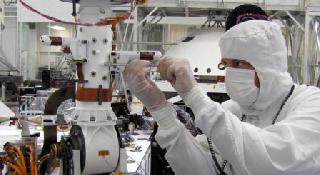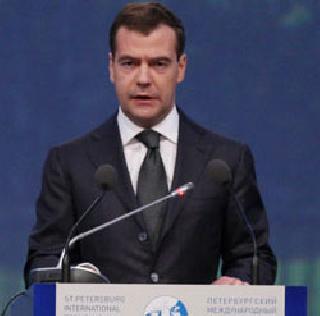
Sensors on two finger-like mini-booms extending horizontally from the mast of NASA's Mars rover Curiosity will monitor wind speed, wind direction and air temperature. Photo by NASA/JPL-Caltech.
PASADENA, CALIFORNIA (BNS): The first instrument from Spain ‘Rover Environmental Monitoring Station’ for a mission to Mars will provide daily weather reports from the Red Planet.
The instrument supplied by Spain’s Ministry of Science and Innovation and Center for Industrial Technology Development, is one of 10 instruments in the mission's science payload.
REMS will fill a central role in studying modern conditions by measuring daily and seasonal changes on Mars.
Components were installed on Curiosity in September and are being tested at NASA's Jet Propulsion Laboratory, Pasadena, California, NASA said.
The biggest challenge according to the team that developed and built the environmental station was to fashion external sensors that could tolerate the temperature extremes.
"The sensors will get very cold and go through great changes in temperature every day," said REMS Principal Investigator Javier Gómez-Elvira.
Other challenges have included accounting for how the rover itself perturbs air movement, and keeping the entire weather station's mass to just 1.3 kilograms (2.9 pounds).
The instrument will record wind speed, wind direction, air pressure, relative humidity, air temperature and ground temperature, plus one variable that have not been measured by any previous weather station on the surface of Mars: ultraviolet radiation.
Operational plans call for taking measurements for five minutes every hour of the 23-month-long mission. Twenty-three months is equal to approximately one Martian year.
Monitoring ground temperature and ultraviolet radiation along with other weather data will contribute to understanding the Martian climate and will aid the mission's assessment of whether the current environment around the rover has conditions favorable for microbial life.
Humidity at the landing sites will be extremely low, but knowing daily humidity cycles at ground level could help researchers understand the interaction of water vapor between the soil and the atmosphere, said Gómez-Elvira.
The weather station will help extend years of synergy between missions that study Mars from orbit and missions on the surface.
"We will gain information about whether local conditions are favorable for habitability, and we will also contribute to understanding the global atmosphere of Mars," he said.
"The circulation models of the Mars atmosphere are based mainly on observations by orbiters. Our measurements will provide a way to verify and improve the models."
For example, significant fractions of the Martian atmosphere freeze onto the ground as a south polar carbon-dioxide ice cap during southern winter and as a north polar carbon-dioxide ice cap in northern winter, returning to the atmosphere in each hemisphere's spring.
At Curiosity's landing site far from either pole, REMS will check whether seasonal patterns of changing air pressure fit the existing models for effects of the coming and going of polar carbon-dioxide ice.
 Previous Article
Previous Article Next Article
Next Article













The Indian Air Force, in its flight trials evaluation report submitted before the Defence Ministry l..
view articleAn insight into the Medium Multi-Role Combat Aircraft competition...
view articleSky enthusiasts can now spot the International Space Station (ISS) commanded by Indian-American astr..
view article